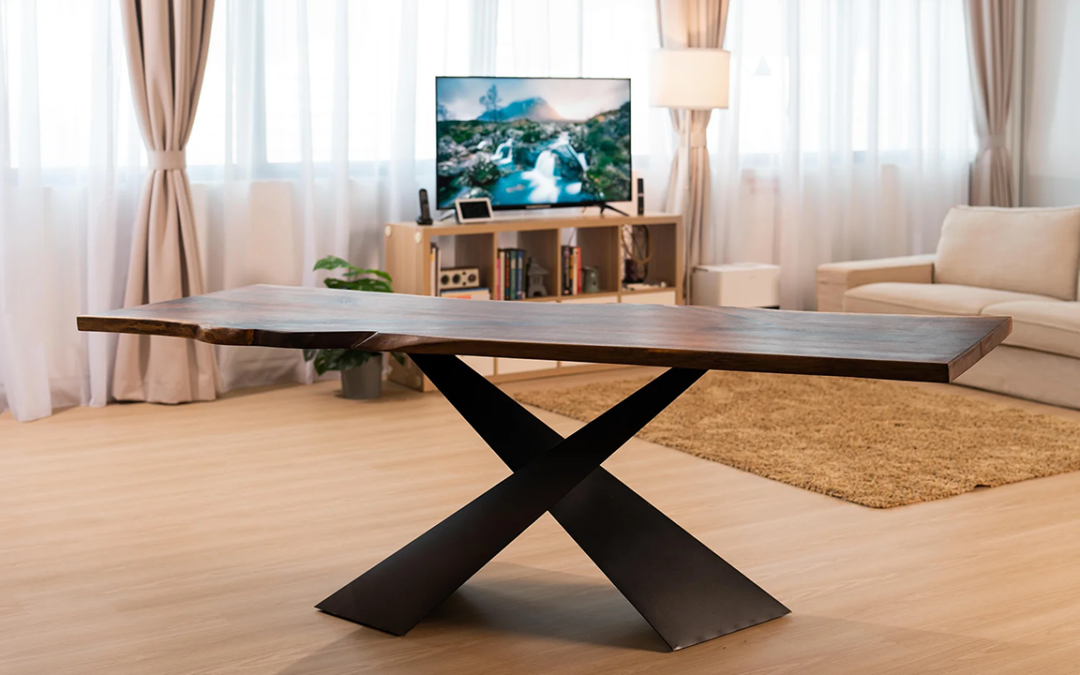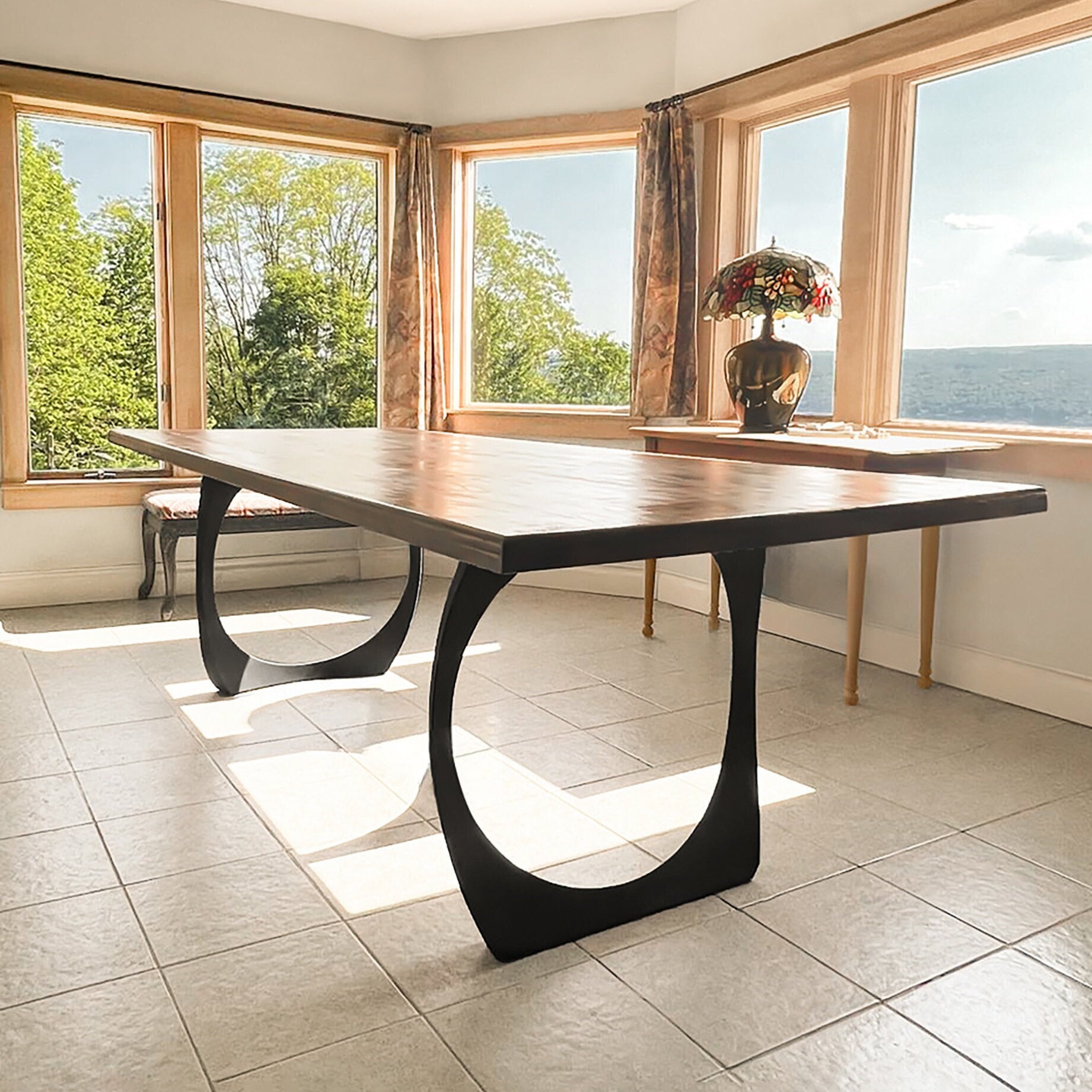Update Your Furnishings with Elegant Dining Room Table Legs
A Thorough Check Out Table Leg Styles: Locating the Suitable Match
Picking the appropriate eating table leg style is essential for both aesthetic allure and functional performance. Traditional 4 legs use ageless elegance and security, while the pedestal base provides boosted legroom and a contemporary look. For those with bigger tables, trestle legs guarantee sturdy assistance, whereas hairpin legs present a mid-century contemporary ambiance with their minimalist layout. The x-shaped legs mix contemporary design with enhanced security. Each of these options brings one-of-a-kind benefits, making the selection greater than just an issue of preference. Check out further to uncover which style flawlessly complements your eating space and way of living.
Traditional Four Legs
Among the different kinds of table leg designs, the traditional four-leg style stays a classic selection for many households. This traditional setup uses an unified mix of capability and aesthetics, making it a perennial favorite. Four legs supply balanced support, ensuring the table continues to be steady and qualified of bearing considerable weight. This is particularly helpful for families that frequently hold big events or use their dining table for multiple purposes, such as work or crafting.
From a visual viewpoint, the standard four-leg design can be easily adjusted to various indoor designs. Whether crafted from wood, steel, or a combination of products, these legs can be elaborately carved, streamlined and minimalistic, or anything in between. Their flexibility permits them to complement both rustic and contemporary settings seamlessly.
Furthermore, the straightforward framework of the four-leg layout promotes simplicity of movement and placement within a space. Unlike more complex bases, this design decreases blockages, giving adequate legroom for diners. In recap, the standard four-leg table leg design marries withstanding style with sensible capability, making it a sharp option for those seeking both type and function in their dining furniture.
Stand Base
Often celebrated for its elegant and space-efficient style, the stand base is a notable alternative to the standard four-leg arrangement in dining table leg styles. Without edge legs, diners are afforded better flexibility of motion, making it a perfect option for round and oval tables that promote more intimate and inclusive gatherings.
Furthermore, the stand base's central assistance can deal with substantial weight, enabling using much heavier table tops, such as marble or thick wood. This strength paired with its visual convenience makes the pedestal base a preferred option in both traditional and modern interior setups. It can perfectly integrate with different design motifs, from timeless elegance to minimal modernity. Additionally, the main column itself provides a canvas for elaborate designs and imaginative expressions, including an element of visual interest beneath the table. In recap, the pedestal base integrates performance with style, making it a fine-tuned and functional option for diverse dining atmospheres.
Trestle Legs
Trestle legs give a durable and timeless foundation for eating tables, characterized by their straight cross-bracing and sturdy support beam of lights. Originating from middle ages times, this style has actually advanced yet preserved its necessary framework, making it a perennial favorite in both traditional and contemporary setups. The central trestle light beam, commonly sustained by two or more upright posts, provides extraordinary security, enabling larger table sizes without the demand for additional legs.
A significant benefit of trestle leg tables is the adequate legroom they use. Unlike tables with 4 edge legs, the lack of blockages at the table's edges gives unimpeded space for chairs and diners, boosting convenience and ease of access. This makes trestle tables perfect for fitting larger celebrations, whether in a dining-room or a reception hall.
The aesthetic adaptability of trestle legs is notable. Readily available in a selection of products such as wood, metal, and composite, they can be finished to enhance a large range of indoor designs. From rustic farmhouse to sleek modern designs, trestle legs can be personalized to match private tastes. Their long-lasting appeal and practical advantages make trestle legs an engaging choice for those seeking both style and usefulness in their table.
Hairpin Legs

The allure of barrette legs depends on their simpleness and adaptability - dining room table legs. Available in a variety of materials, including steel and brass, they can be completed in various shades to enhance different interior designs. Whether paired with a rustic wooden tabletop or a modern glass surface area, hairpin legs easily blend functionality with a touch of classic charm
Sturdiness is one more noteworthy feature of barrette legs. Regardless of their delicate look, these legs are engineered to bear considerable weight, making certain the dining table remains secure and More Bonuses protected. In addition, they are fairly simple to install, making them a prominent option for DIY lovers and expert furnishings makers alike.
X-Shaped Legs

Created from materials such as steel, wood, or a mix of both, X-shaped legs can be tailored to match different layout preferences. Steel legs usually provide a streamlined and industrial feel, perfect for loft-style apartments and contemporary eating spaces. On the other hand, wood X-shaped legs offer a warmer, much more rustic allure, suitable for farmhouse or eclectic insides. The convenience in materials enables home owners to customize their table to much better fit their total design scheme.
In addition, the design behind X-shaped legs ensures even weight distribution, reducing the danger of tottering and enhancing toughness. This makes them specifically well-suited for larger table that require additional support. Essentially, X-shaped legs blend practical engineering with modern visual appeals, making them an ageless option for diverse dining environments.
Conclusion
A comprehensive understanding of dining table leg designs discloses the distinctive attributes and advantages of each style. Conventional four legs offer security and classic allure, while pedestal bases offer legroom and a streamlined appearance. Trestle legs make certain durable support for larger tables, and barrette legs present a mid-century contemporary aesthetic. X-shaped legs combine modern style with enhanced stability. Picking the proper leg style ensures both useful and visual complete satisfaction in any eating area.